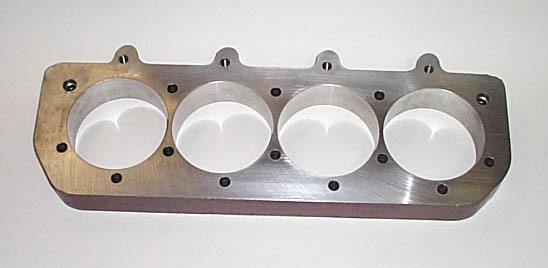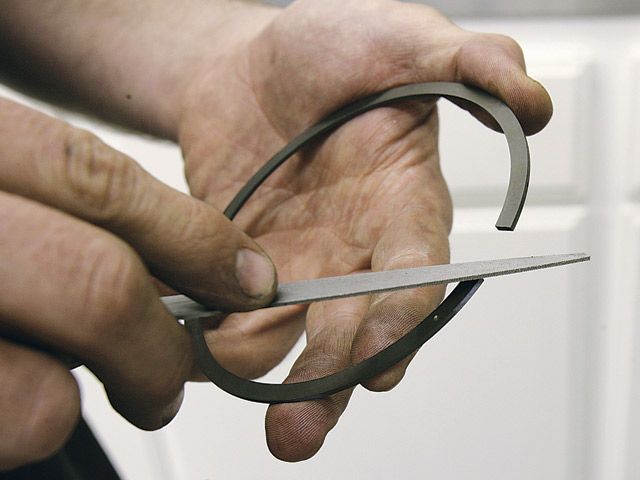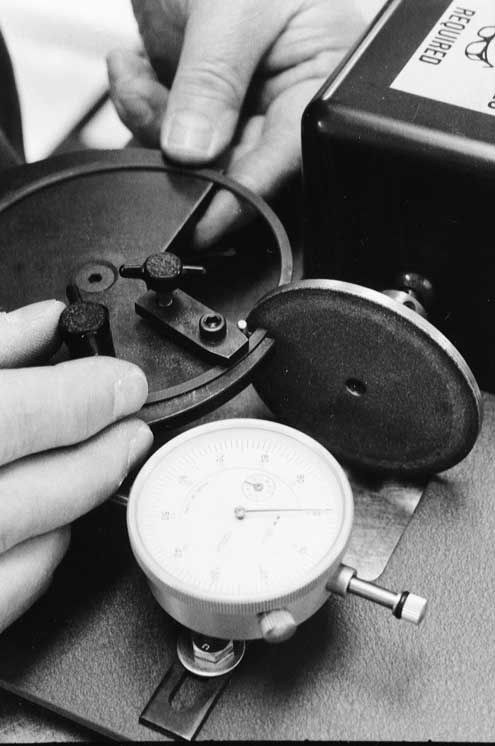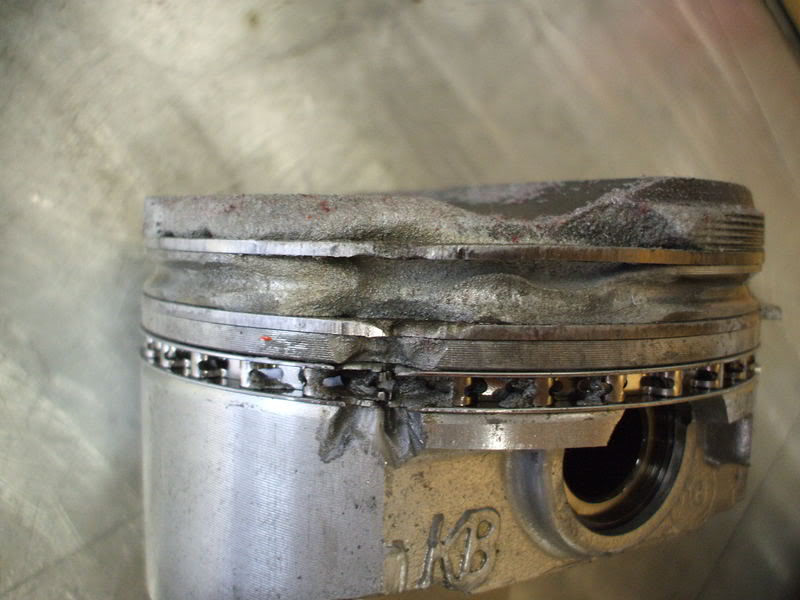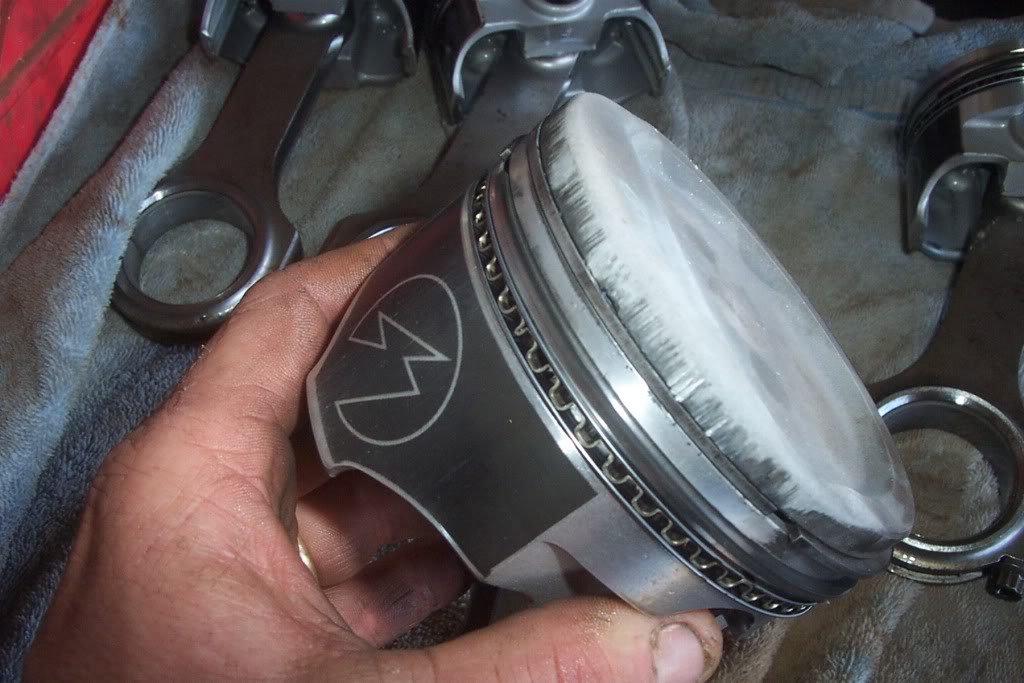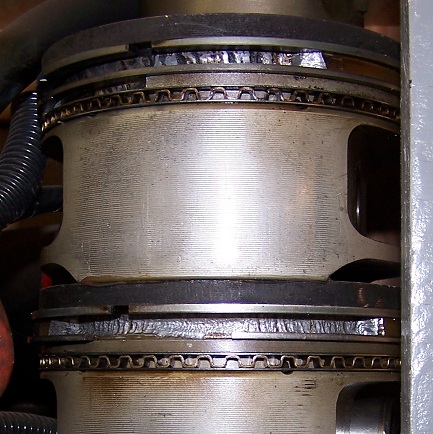the general rule is that for normal use a pistons top ring should have a minimum of .004 thousandths end gap for each inch of bore diam. ie a 4" bore requires a minimum of a .016 end gap, to prevent the ring ends from bearing on each other after heat expansion,expanding them, so as to prevent the ring locking in the bore and pulling the top of the piston ring lands off, resulting in catastrophic engine failure.
but in high heat applications increase ring end gap is HIGHLY recommended
keep in mind oil flow and oil splashed on the cylinder walls does a great deal of the cooling on piston rings
for about the first 30 years we built engines with the top ring gap set at slightly larger than the second ring gap because it operates at higher heat levels, usually the top ring gaps were set at a minimum of 4.5 thousands per inch of bore diam. and the second ring gap, at a minimum of 4 thousands per inch of bore diam.
BUT RECENT TESTING HAS CONFIRMED
that pressure that bye-passes the top ring that gets trapped between the first and second compression rings tends to significantly reduce the top ring seal, thus the current recommendation is for the second ring to have a slightly larger end gap to significantly reduce that
now years ago, we were instructed to leave the second ring gap at a tighter .004 per inch of bore with the upper top ring having the larger end gap due to the higher heat levels, it operates under ,well extensive testing in recent years shows that
(1)the second ring gap needs to be larger because if significant cylinder pressure builds between the top and lower ring the upper ring seal is quickly lost
(2)theres very little cylinder pressure lost thru the ring gaps in the thousandths of a second the rings are compressing the fuel/air mix, or during the power stroke, because most of the blow by, is the result of less than effective ring to cylinder wall seal
(3) ring seal is destroyed if the ring gap allows the rings to contact, or the rings butting destroys the piston lands
(4) ring gaps up to about .045 have very little effect on blow by or oil use
I'd also point out that the clearance in the piston ring grooves and back-spacing has a huge effect on the way the rings seal.
if the oil is not frequently changed, sludge build-up behind the rings greatly reduces the ring seal efficiency.
once varnish or burnt oil residue builds up behind piston rings they will fail to seal to the bore walls effectively increasing oil burning and oil fouling spark plugs
https://www.bgprod.com/catalog/engine/bg-quick-clean-for-engines/

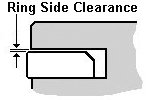
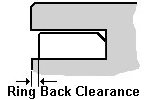

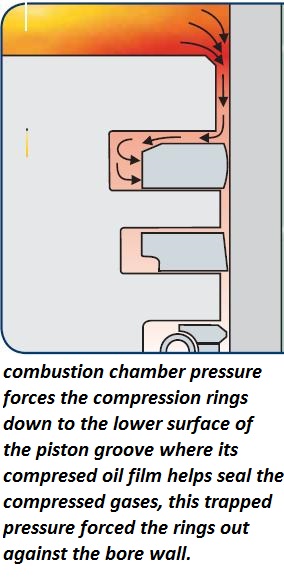
if you want a fast dependable car you will need to either do the research required to know exactly how and why things should work, or pay someone else to do the work that has taken that time and effort.
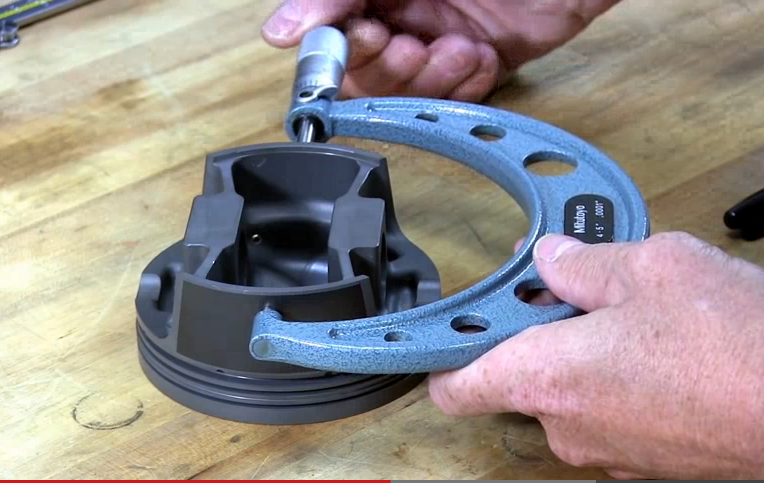
your going to need decent feeler gauges
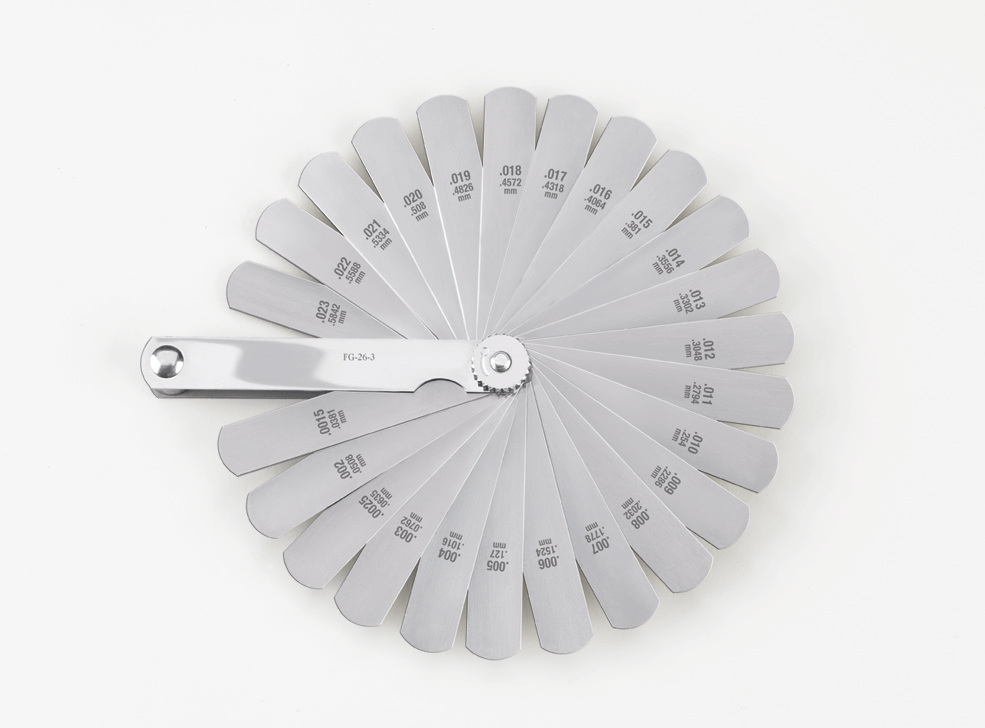
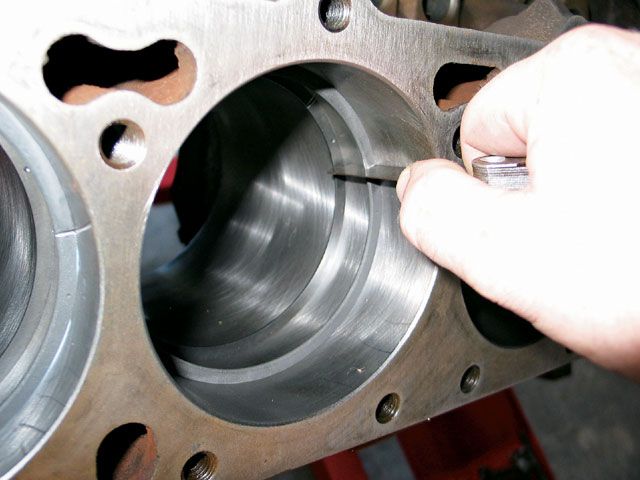
if the ring gaps, or piston to bore clearances are not carefully checked, or not correct your engine could easily get screwed up
Due to machining tolerances on both pistons and bore sizes theres always some minor differences between components,
when your assembling any engine, youll file fit the ring gaps to individual cylinders,and youll,
generally you'll want to carefully measure each individual piston diameter and each individual bore diameter very carefully,
and match the larger pistons to the larger bore sizes to keep the average side clearance as consistent as possible
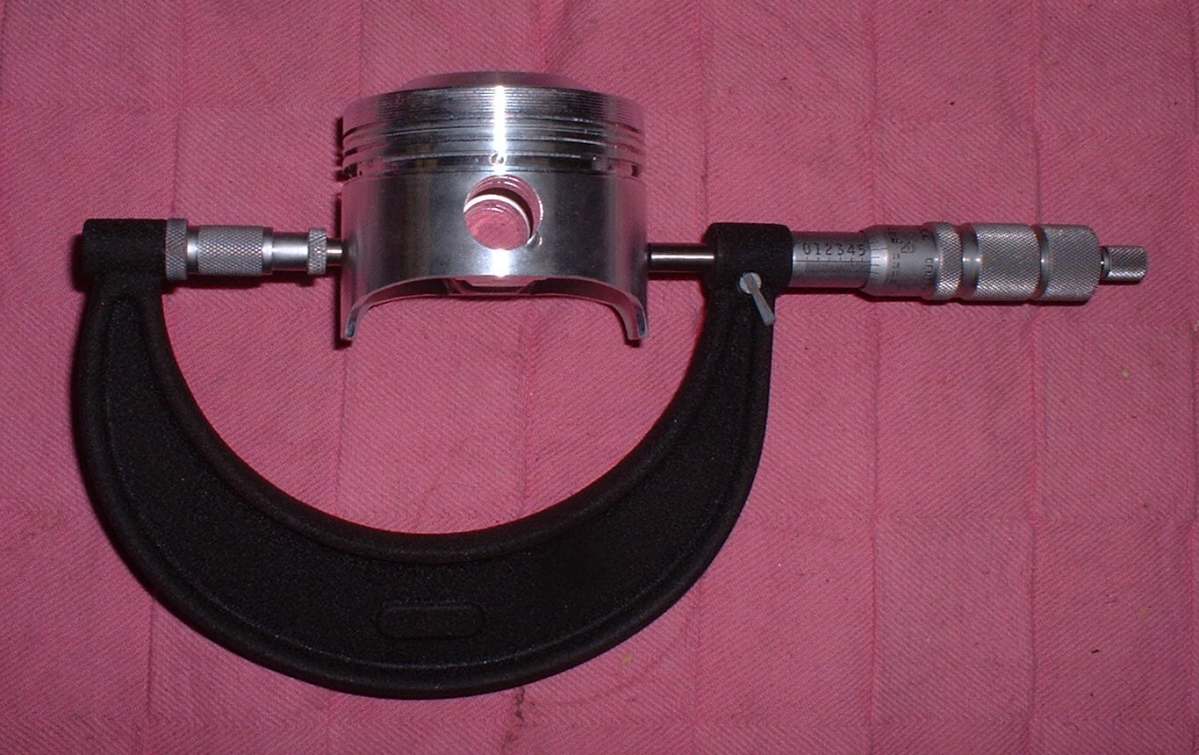
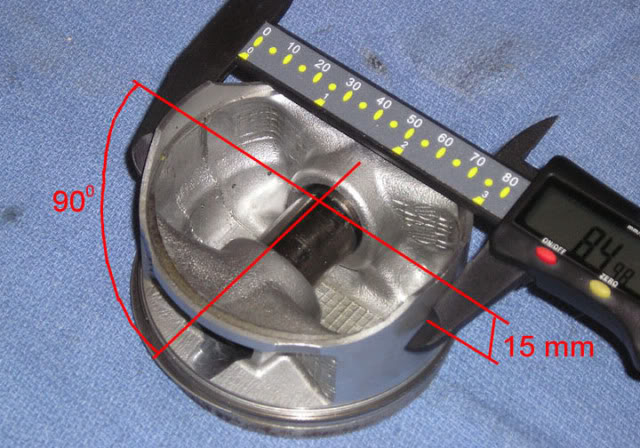
most applications would have a ring gap of about .004-.005 per inch of bore diam.
http://www.kb-silvolite.com/article.php ... ad&A_id=64
Application
Bore x
High-Performance Street / Strip
.0045â€Top Ring
.0055â€2nd Ring
Street-Moderate Turbo / Nitrous
.0050â€Top Ring
.0055â€2nd Ring
Late Model Stock
.0050â€Top Ring
.0055â€2nd Ring
Circle Track/Drag Race
.0055â€Top Ring
.0060â€2nd Ring
Blown Race Only
.0065â€Top Ring
.0070â€2nd Ring
Nitrous Race Only
.0070â€Top Ring
.0075â€2nd Ring
READ THESE LINKS, THEY CONTAIN A GREAT DEAL OF USEFUL INFO
http://www.wiseco.com/PDFs/Manuals/RingEndGap.pdf
http://www.kb-silvolite.com/assets/kb_installation.pdf
http://www.stockcarracing.com/techartic ... index.html
http://www.aa1car.com/library/ring_end_gap.htm
http://www.circletrack.com/enginetech/c ... index.html
http://www.circletrack.com/howto/1818/index.html
http://www.kb-silvolite.com/assets/auto ... ctions.pdf
http://www.kb-silvolite.com/article.php ... ad&A_id=56
http://www.aa1car.com/library/ar293.htm
viewtopic.php?f=53&t=509&p=632&hilit=+compressor+rings#p632
viewtopic.php?f=53&t=1797
viewtopic.php?f=53&t=2795
viewtopic.php?f=53&t=247
http://www.muller.net/sonny/crx/rings/index.html
viewtopic.php?f=51&t=588

you may want to keep in mind cast iron or moly faced cast iron piston rings expand with heat and that .018 gap in a running engine with a piston temp of lets say 450f would drop to, near 10-12 thousandths of an inch, get into detonation, and heat could reach a temp range where the rings lock in the bore
http://www.engineeringtoolbox.com/therm ... d_859.html
http://www.enginebuildermag.com/Article ... mance.aspx
you may want to keep in mind that once an engines up to operational temperatures, the piston to bore clearance is rather tight and the ring gaps are significantly reduced due to heat expansion, in the metals, at just 1000rpm idle speeds , theres 8.3 compression /power strokes PER SECOND, and that almost all the peak cylinder pressure is incurred during the upper 2" of piston travel, as the piston approaches or recedes from tdc, theres not a great deal of the cylinder volume that can leak past a properly functioning ring thru a gap that's maybe 12 thousandths wide, in the .07 of a second that peak compressions potentially occurring, speed the rpms up to 6500rpm and your down to only .011 seconds per power stroke in the higher pressure range, again, a minimal ring gap has almost no effect, everything , Ive read states that gaps up to about .45 thousands of an inch have a minimal effect on compression or power, or even oil consumption if the rings are sealing to the bore effectively.
youll be far more concerned with the ring seal, bore hone, and having the block honed with plates simulating the bore stress tightened head bolts produce to reduce ring blow-bye

read this
viewtopic.php?f=51&t=588
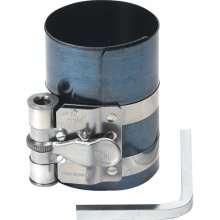
worthless P.I.T.A. to use
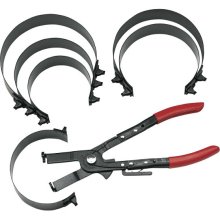
GOOD and VERSITILE
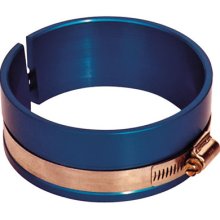
WORKS GREAT BUT LIMITED TO A NARROW BORE RANGE AND EXPENSIVE
http://www.amazon.com/KD-Tools-850-Diam ... 0002STSMG/
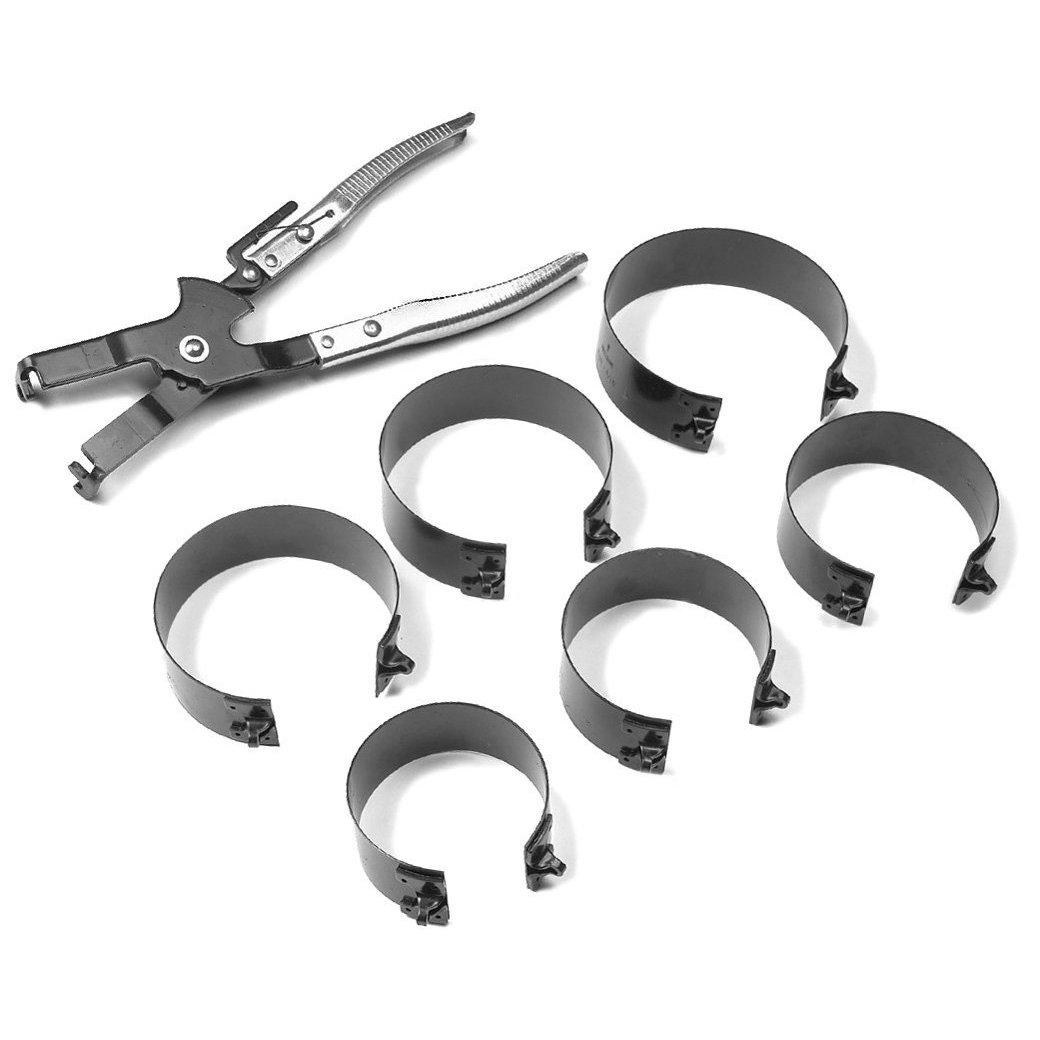
this type (ABOVE) handles many applications but the cheap versions are a P.I.T.A. to work with
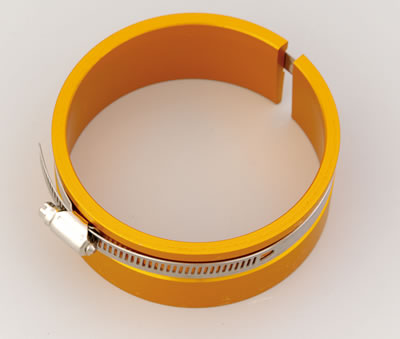
BTW when you go to buy a ring compressor....this type(ABOVE & BELOW) works far better than the others, but its specific to a very limited range in bore size applications
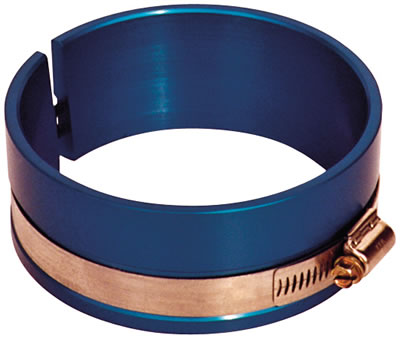
http://store.summitracing.com/partdetail.asp?autofilter=1&part=PRO-66766&N=700+115&autoview=sku
Proform 66766 $31
but in high heat applications increase ring end gap is HIGHLY recommended
keep in mind oil flow and oil splashed on the cylinder walls does a great deal of the cooling on piston rings
for about the first 30 years we built engines with the top ring gap set at slightly larger than the second ring gap because it operates at higher heat levels, usually the top ring gaps were set at a minimum of 4.5 thousands per inch of bore diam. and the second ring gap, at a minimum of 4 thousands per inch of bore diam.
BUT RECENT TESTING HAS CONFIRMED
that pressure that bye-passes the top ring that gets trapped between the first and second compression rings tends to significantly reduce the top ring seal, thus the current recommendation is for the second ring to have a slightly larger end gap to significantly reduce that
now years ago, we were instructed to leave the second ring gap at a tighter .004 per inch of bore with the upper top ring having the larger end gap due to the higher heat levels, it operates under ,well extensive testing in recent years shows that
(1)the second ring gap needs to be larger because if significant cylinder pressure builds between the top and lower ring the upper ring seal is quickly lost
(2)theres very little cylinder pressure lost thru the ring gaps in the thousandths of a second the rings are compressing the fuel/air mix, or during the power stroke, because most of the blow by, is the result of less than effective ring to cylinder wall seal
(3) ring seal is destroyed if the ring gap allows the rings to contact, or the rings butting destroys the piston lands
(4) ring gaps up to about .045 have very little effect on blow by or oil use
I'd also point out that the clearance in the piston ring grooves and back-spacing has a huge effect on the way the rings seal.
if the oil is not frequently changed, sludge build-up behind the rings greatly reduces the ring seal efficiency.
once varnish or burnt oil residue builds up behind piston rings they will fail to seal to the bore walls effectively increasing oil burning and oil fouling spark plugs
https://www.bgprod.com/catalog/engine/bg-quick-clean-for-engines/




if you want a fast dependable car you will need to either do the research required to know exactly how and why things should work, or pay someone else to do the work that has taken that time and effort.

your going to need decent feeler gauges


if the ring gaps, or piston to bore clearances are not carefully checked, or not correct your engine could easily get screwed up
Due to machining tolerances on both pistons and bore sizes theres always some minor differences between components,
when your assembling any engine, youll file fit the ring gaps to individual cylinders,and youll,
generally you'll want to carefully measure each individual piston diameter and each individual bore diameter very carefully,
and match the larger pistons to the larger bore sizes to keep the average side clearance as consistent as possible


most applications would have a ring gap of about .004-.005 per inch of bore diam.
http://www.kb-silvolite.com/article.php ... ad&A_id=64
Application
Bore x
High-Performance Street / Strip
.0045â€Top Ring
.0055â€2nd Ring
Street-Moderate Turbo / Nitrous
.0050â€Top Ring
.0055â€2nd Ring
Late Model Stock
.0050â€Top Ring
.0055â€2nd Ring
Circle Track/Drag Race
.0055â€Top Ring
.0060â€2nd Ring
Blown Race Only
.0065â€Top Ring
.0070â€2nd Ring
Nitrous Race Only
.0070â€Top Ring
.0075â€2nd Ring
READ THESE LINKS, THEY CONTAIN A GREAT DEAL OF USEFUL INFO
http://www.wiseco.com/PDFs/Manuals/RingEndGap.pdf
http://www.kb-silvolite.com/assets/kb_installation.pdf
http://www.stockcarracing.com/techartic ... index.html
http://www.aa1car.com/library/ring_end_gap.htm
http://www.circletrack.com/enginetech/c ... index.html
http://www.circletrack.com/howto/1818/index.html
http://www.kb-silvolite.com/assets/auto ... ctions.pdf
http://www.kb-silvolite.com/article.php ... ad&A_id=56
http://www.aa1car.com/library/ar293.htm
viewtopic.php?f=53&t=509&p=632&hilit=+compressor+rings#p632
viewtopic.php?f=53&t=1797
viewtopic.php?f=53&t=2795
viewtopic.php?f=53&t=247
http://www.muller.net/sonny/crx/rings/index.html
viewtopic.php?f=51&t=588

you may want to keep in mind cast iron or moly faced cast iron piston rings expand with heat and that .018 gap in a running engine with a piston temp of lets say 450f would drop to, near 10-12 thousandths of an inch, get into detonation, and heat could reach a temp range where the rings lock in the bore
http://www.engineeringtoolbox.com/therm ... d_859.html
http://www.enginebuildermag.com/Article ... mance.aspx
you may want to keep in mind that once an engines up to operational temperatures, the piston to bore clearance is rather tight and the ring gaps are significantly reduced due to heat expansion, in the metals, at just 1000rpm idle speeds , theres 8.3 compression /power strokes PER SECOND, and that almost all the peak cylinder pressure is incurred during the upper 2" of piston travel, as the piston approaches or recedes from tdc, theres not a great deal of the cylinder volume that can leak past a properly functioning ring thru a gap that's maybe 12 thousandths wide, in the .07 of a second that peak compressions potentially occurring, speed the rpms up to 6500rpm and your down to only .011 seconds per power stroke in the higher pressure range, again, a minimal ring gap has almost no effect, everything , Ive read states that gaps up to about .45 thousands of an inch have a minimal effect on compression or power, or even oil consumption if the rings are sealing to the bore effectively.
youll be far more concerned with the ring seal, bore hone, and having the block honed with plates simulating the bore stress tightened head bolts produce to reduce ring blow-bye

read this
viewtopic.php?f=51&t=588

worthless P.I.T.A. to use

GOOD and VERSITILE

WORKS GREAT BUT LIMITED TO A NARROW BORE RANGE AND EXPENSIVE
http://www.amazon.com/KD-Tools-850-Diam ... 0002STSMG/

this type (ABOVE) handles many applications but the cheap versions are a P.I.T.A. to work with

BTW when you go to buy a ring compressor....this type(ABOVE & BELOW) works far better than the others, but its specific to a very limited range in bore size applications

http://store.summitracing.com/partdetail.asp?autofilter=1&part=PRO-66766&N=700+115&autoview=sku
Proform 66766 $31
Last edited by a moderator:


